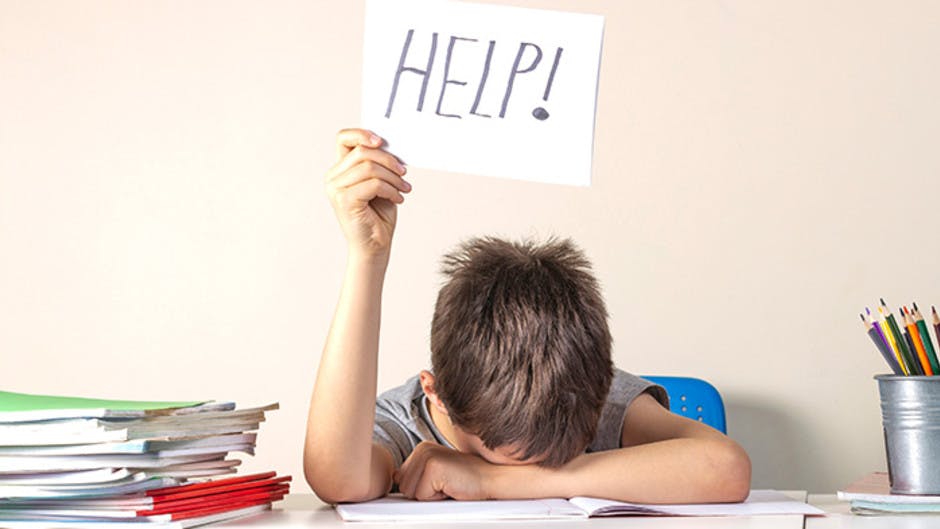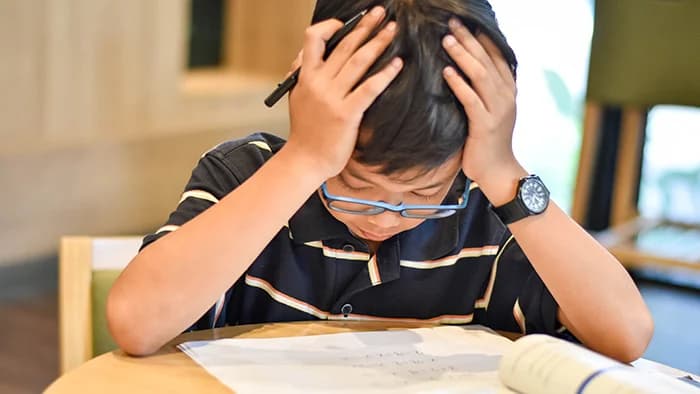


How to Know if Your Child Needs Help With Maths

A child's ability to grasp early maths concepts can often be observed during their first years of school. While every child is different and learning maths is done at their own pace, some children will find it particularly difficult to pick up early maths concepts, even after a little extra work.
Most of us can remember being called up during maths class to solve problems on the board. If you didn't know what you were doing, it was horrifying! While learning maths can be more challenging for some students, it doesn't have to be. With the right strategies and a bit of practice, children can learn to solve maths problems, feel confident and even begin to like it!
On the other hand, if you have serious concerns about your child's learning, it's best to speak to a professional to rule out any learning disabilities or developmental disorders such as dyscalculia, which is a severe difficulty in learning and comprehending arithmetic.
Below are six common signs of a struggling early maths learner and what you as a parent can do to support your child with learning maths.
The fun‑filled maths adventure for struggling learners
Mathseeds is a fun and engaging online maths programme for kids aged 3–9. Designed by expert educators, Mathseeds uses interactive games, activities, songs and lessons to help your child build essential early maths skills at their own pace. Start your free trial of Reading Eggs and Mathseeds today!

1. Difficulty with skip counting by 10s to 100
Around the age of 6, children begin learning how to skip count. Skip counting helps your child count quickly and prepares them for learning basic multiplication skills.
Skip counting by 10s is easiest, as is very similar to normal counting, except there is an extra '0': 10, 20, 30 … 80, 90, 100. This can be frustrating and sometimes embarrassing in class as they will often be last to complete counting exercises involving large numbers.
How to help kids with this maths problem
If your child struggles with skip counting, use a skip counting chart and simple counters (e.g. rocks, pegs or coins) to help them easily see skip counting patterns right in front of them. You can draw up a skip counting chart, or download free templates online.
2. Having trouble counting or grouping objects into sets
At the age of 5–6, children begin to group objects into sets and learn how to count by ones to determine the size of each set.
You can help your child learn this maths skill by gathering a range of different objects, such as toy cars, stuffed animals, books, block shapes, fruit and vegetables and placing them on a table. Explain that each group of objects is a set and help your child count the objects in each set. Remember, repetition is key.
If you need some inspiration, check out these 5 Creative Counting Games for Kids: Click here
3. Having trouble spotting patterns
Children begin to learn to spot patterns from as young as the age of 2. Most of these observations come from their play and daily routines. For example, learning that there is an order to the day, or creating sequences using craft items or building blocks.
If they are having trouble recognising these patterns, like remembering the order of morning, noon, afternoon, evening and night, you might find them getting frustrated and confused. But, there is a solution.
Kids learning maths patterns have a variety of fun options to choose from when they practice this maths skill. You could do some fun activities such as matching socks, sorting kitchen items by category, bead‑making or creating a daily calendar. Read 5 fun ways to teach your child about patterns.
4. Difficulty with sorting objects
Sorting objects by size, shape or colour is one of the earliest maths skills a child picks up, usually through play. By sorting, children understand that things are alike or different, that those things can belong and be put into certain groups.
To help your child sort, you need at least two different types of objects. Start with less categories (sorting by two types) and gradually progress to three, four or more. Slowly demonstrate each sort before asking your child to have a go.
5. Difficulty with writing and pointing out numbers up to 20
By kindergarten, most children learning maths will be able to write and point out numbers up to 20.
You can help your child grow familiar with numbers through daily activities. For example, invite your child to dial a telephone number for you when you are using a phone. Point to and read aloud each number as it is being dialled.
To help your child write numbers, help them form the shape of each number using different materials, such as clay or paints.
6. Inability to use measurement language to describe objects
At age 5–6, most children are able to understand and use simple measurement language, such as bigger or smaller, longer or shorter and before or after.
There are many picture books that teach young children how to use simple measurement language. You can also help your child understand measurement language by arranging different objects by size and length.
Remember to use measurement language regularly around your child, such as, “This piece of bread is the biggest”, “We don't eat dessert before dinner”, or “Let's find a shorter stick than this one”.
Remember, you can make the learning process easier by making things fun. Try playing games with your children to help keep them engaged and make learning maths something they look forward to. Try these games here.
The fun‑filled maths adventure for struggling learners
Mathseeds is a fun and engaging online maths programme for kids aged 3–9. Designed by expert educators, Mathseeds uses interactive games, activities, songs and lessons to help your child build essential early maths skills at their own pace. Start your free trial of Reading Eggs and Mathseeds today!


